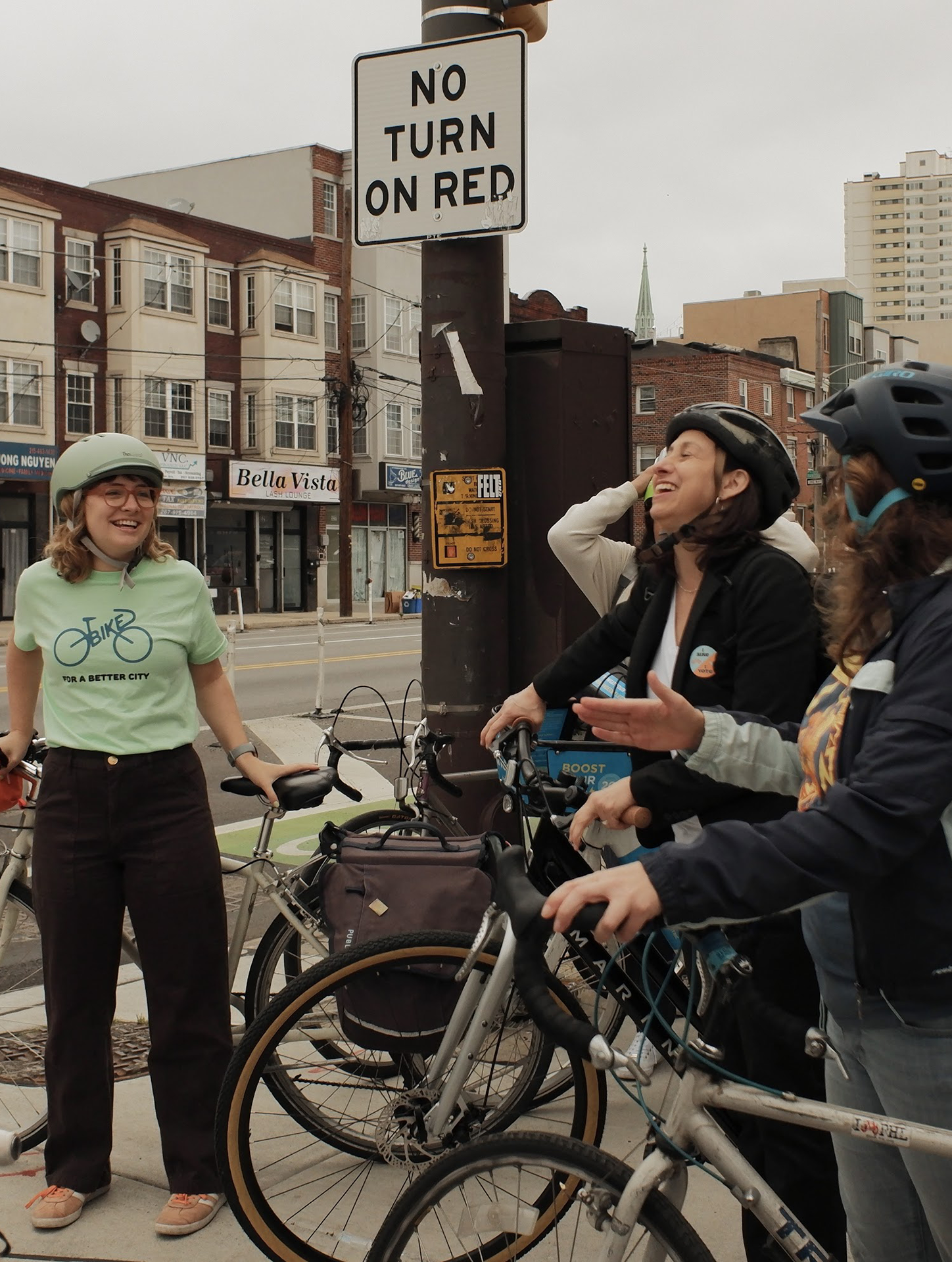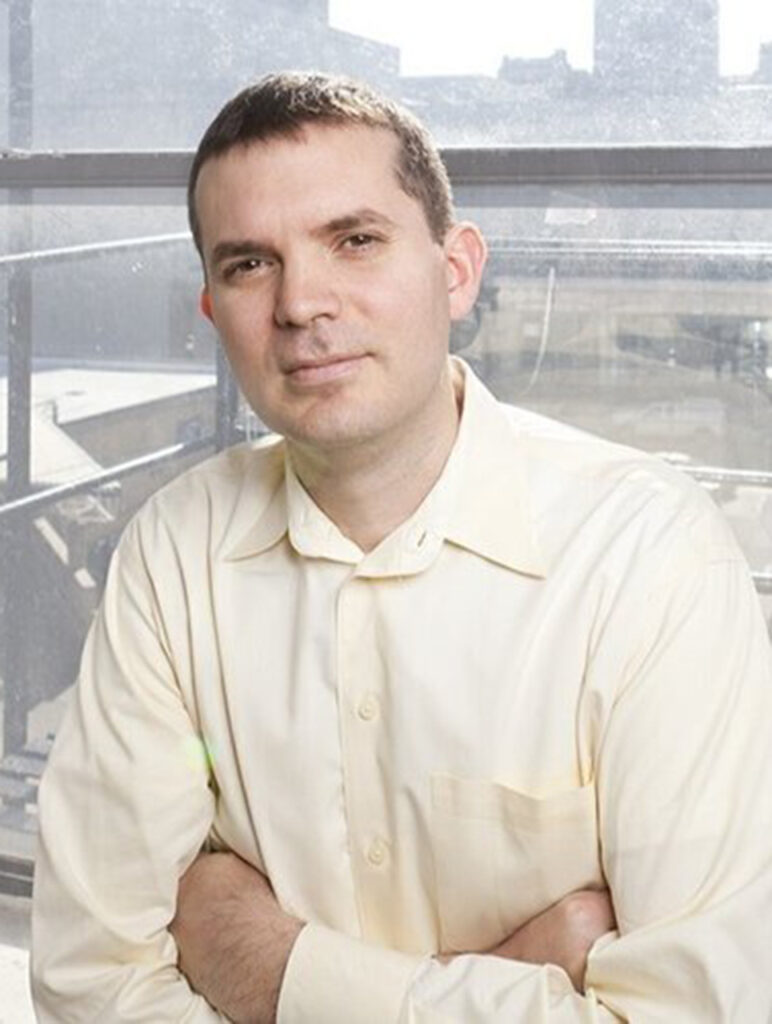Nearly two decades ago, in 2006, SEPTA bought its very first hybrid bus with hopes of eventually transitioning the region’s public transit system to clean energy.
The agency attempted to go all-electric in 2016, when its board approved the purchase of 25 electric buses from Proterra, one of the largest electric bus manufacturers at the time. Despite the roughly $25 million price tag, the vehicles were taken out of service after just three years because of performance issues and cracks in their frames.
Then, in 2020, one of the buses — one of many Proterra vehicles that had a fatal radiator software malfunction — caught on fire while sitting in SEPTA’s southern depot. Although no one was injured, it would be years before the agency deployed another all-electric bus.
After the incident, SEPTA changed its strategy and ordered 220 diesel-electric hybrid buses. The switch, while only reducing emissions by 30%, made Philly’s transit system one of the cleanest in the nation.
SEPTA retired its last all-diesel bus in 2024, but officials have their sights set on an even higher target: eliminating emissions by 2040. As part of that effort, the agency is set to test new bus technology once again.
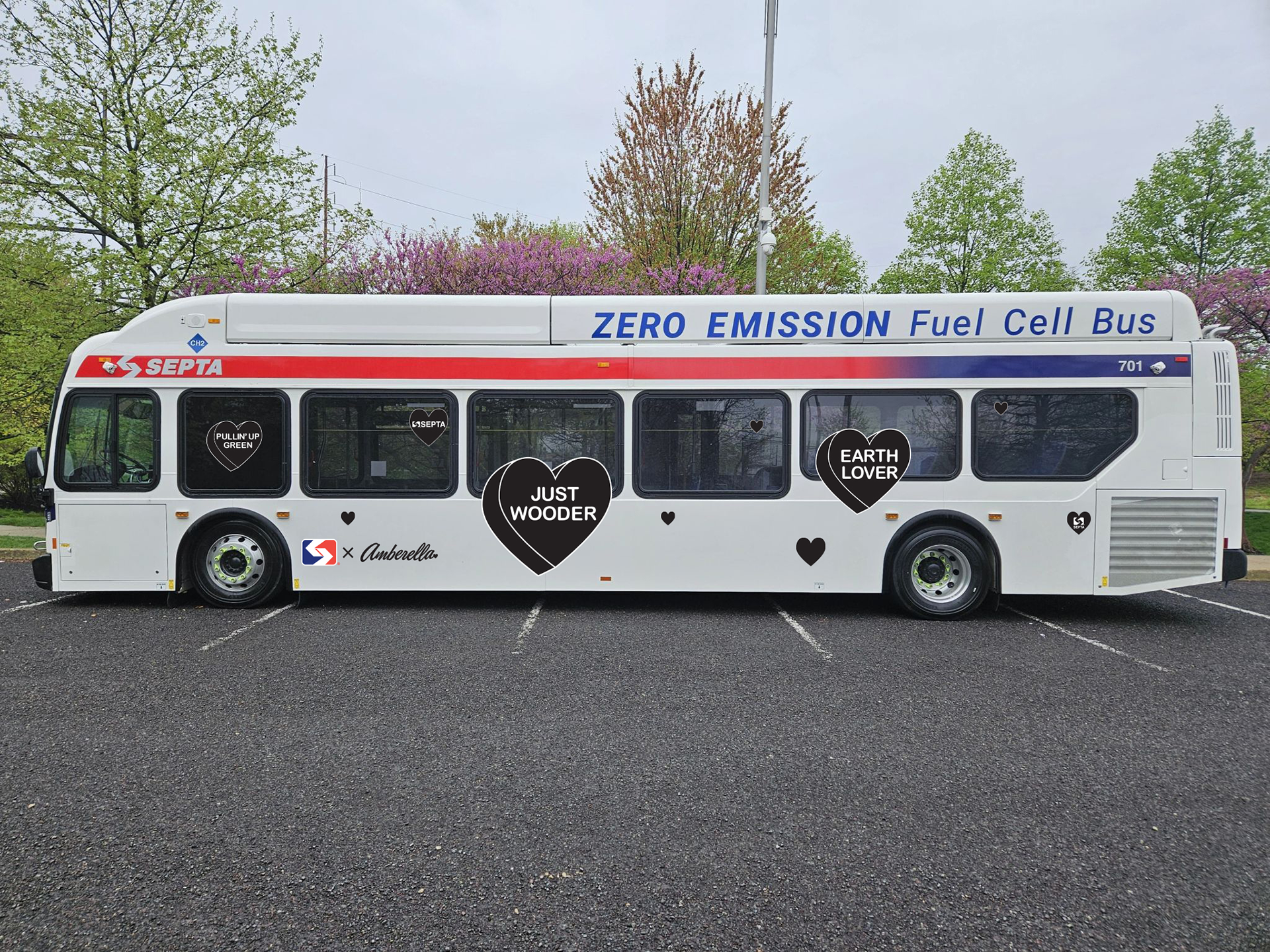
Are we there yet?
Despite the agency’s research and planning, its annual emissions are the highest they’ve been since 2018, with an estimated 644 million pounds of carbon dioxide released into the atmosphere last year.
Diesel still leads energy consumption at SEPTA, too, accounting for over 40% of total use as of July 2023. While public transit is still far less harmful to the environment than car travel, these numbers are out of alignment with the agency’s targets, which require lowering its carbon footprint every year.
SEPTA’s Zero Emission Bus (ZEB) Program was created to do just that.
The program lays out a plan for piloting 10 battery electric and 10 hydrogen fuel cell buses. They will be deployed across SEPTA’s service area and evaluated for performance and cost-effectiveness.
“There’s not a lot of good information out there in that space,” says Emily Yates, SEPTA’s chief innovation officer. “There’s all of these things being touted, but not the data behind it, which is why I’m really happy that we agreed at SEPTA to not just take their word for it, but really run it through the rigors of operating in the city of Philadelphia and the surrounding counties and really getting our own data around things that impact us.”
Yates says that Philadelphians can expect to see the hydrogen buses around the city in the coming months. While they look almost the same as the rest of the agency’s fleet, SEPTA collaborated with mixed media and street artist Amberella to create stickers with her iconic heart art, touting the vehicles’ benefits with a Philly twist.
SEPTA is still in the process of procuring the battery electric buses.
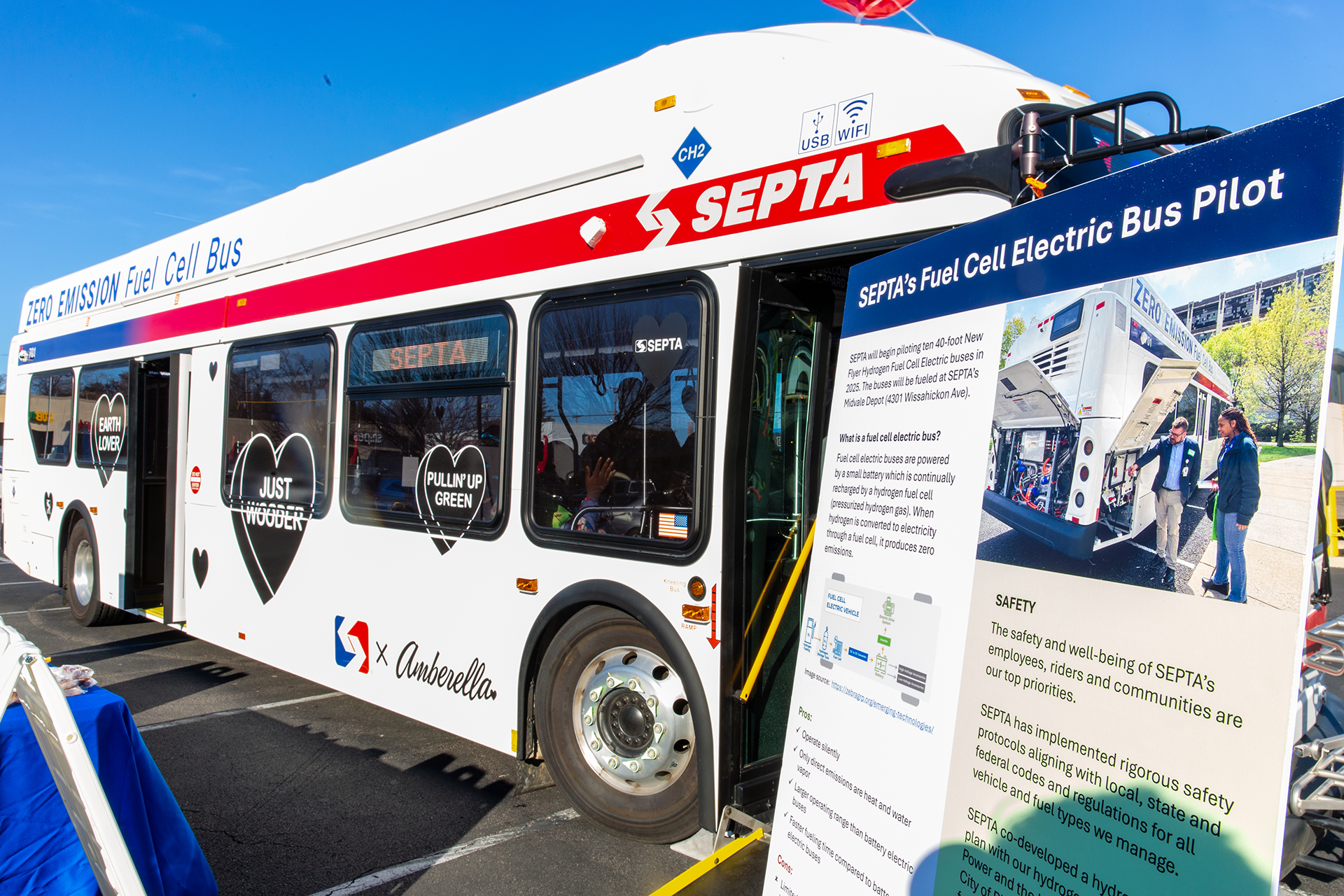
What about the trolleys?
Some city residents think SEPTA should take a different approach.
“It does feel like they’ve gone backwards overall,” says Justin Roczniak, a West Philadelphia civil engineer and self-described transit enthusiast who hosts the popular podcast “Well, There’s Your Problem.”
“The big one that really pissed me off is the process of taking down the trolley bus wires for the promise of battery buses, then the battery buses never really materialized,” he says.
Roczniak and other sources who declined to speak on the record reference Dayton, Ohio’s decision to expand electric trolley bus routes as that city pursues lower emissions as one key example in support of their pro-trolley argument.
According to SEPTA officials, however, Philadelphia’s situation isn’t so simple.
“It is a lot to maintain that infrastructure and it’s a lot to maintain the trolley buses,” Yates says. The more moving pieces there are — in this case, tracks, wires and the vehicles themselves — the more complicated (and expensive) keeping them running is.
Despite the higher price tag, Philly’s five trackless trolley routes are also set to go all-electric over the next 24 months, switching from an electric system with backup diesel power for periods where the trolleys are not connected to overhead power.
Health impacts
In addition to reducing the city’s carbon footprint, these efforts could also improve Philadelphia’s air quality. Data collected by the Clean Air Task Force, a Boston-based environmental research and advocacy organization, shows that southeastern Pennsylvania and neighboring New Jersey have some of the worst diesel vehicle pollution in the nation.
“Diesel exhaust contains more than 40 known cancer-causing organic substances, making it responsible for about 70 percent of cancer risk related to air toxins,” says Erin Johnson, a public health nurse, educator and organizer with the Alliance of Nurses for Healthy Environments.
That exhaust typically contains a number of harmful chemical compounds, including nitrogen oxides, sulfur dioxide, ammonia and volatile organic compounds.
“Residents living near ports, warehouses and busy roads are exposed to such high rates of heavy-duty vehicle pollution that physicians have labeled these areas ‘diesel death zones’ — because asthma rates and cancer risks are so drastically elevated,” Johnson says.
Diesel exhaust contains more than 40 known cancer-causing organic substances, making it responsible for about 70 percent of cancer risk related to air toxins.”
— Erin Johnson, public health nurse
While it’s difficult to attribute health issues to a sole environmental cause, Philadelphia does see higher rates of the very conditions that air pollution exacerbates. That includes asthma, cancer and COPD.
Switching to low- or zero-emission buses would likely help improve Philly’s air pollution problem and residents’ health. But advocates and researchers say that the reality isn’t so simple.
Hydrogen and electric power are typically considered green energy, since they produce lower emissions than fuels like gasoline or diesel. How that power is produced plays a significant role in how clean it actually is, however.
“If you live near hydrogen production involving methane, whether that be fracked gas or gas from a landfill or sewage, your health is going to be sacrificed for those buses,” says Linnea Bond, a health educator and campaign coordinator with Physicians for Social Responsibility Pennsylvania.
Bond added that relying on methane could be dangerous, too. Even if precautions are taken, particles escape into the atmosphere during production and transportation — and those particles have 80 times more global warming potential than carbon dioxide.
SEPTA’s website about the Zero Emission Bus plan states that the hydrogen it purchases from Plug Power is currently made from at least 6% renewable sources, matching the state’s electrical grid. The website claims that once Plug’s new plant in Rochester, New York, is completed, it will supply the city with 100% green hydrogen.
The new plant is currently stalled, though, because of conflicts over nearby tribal land.
SEPTA officials also say that they plan to source hydrogen from the planned Mid-Atlantic Clean Hydrogen Hub, a project proposed by the Biden administration. Its status under the Trump administration is unclear.
Financial factors
While green hydrogen — which is made from water and a renewable electric source — avoids greenhouse gases, Bond says producing it is expensive and energy intensive.
“In terms of efficiency, we should reserve green hydrogen for only our hardest-to-decarbonize industries, like agriculture, not transportation, which is far easier to decarbonize through electrification,” Bond says.
The price of fuel is just one of the budget items complicating the transition process.
Current estimates indicate that between the 2024 and 2025 fiscal years, fuel spending will decrease just 5%, in part thanks to the agency’s sustainability initiatives. There are other factors at play, however, including new purchasing strategies and lower service levels.
Electric and hydrogen buses are priced two to three times higher than diesel or hybrid ones, adding to the total cost. And that doesn’t include building infrastructure for refueling or take things like supply chain shortages, tariffs or Trump administration-related funding changes into account.
A new partnership with the University of Pennsylvania’s Wharton School of Business will help SEPTA better understand the full financial impact of both the battery-electric and hydrogen-powered buses, Yates says, again referring to the lack of relevant data available surrounding use.
Converting SEPTA’s hybrid bus fleet to electric is another option on the table. While an official deal has not been signed, Yates says that the agency plans to partner with Pepper Motion, a German company with plans to establish their United States headquarters in Philadelphia.
The agency’s recent budgetary crisis may also play a role in the future of its green transition.
Just last year, the agency declared that it was about to enter a financial “death spiral” that would lead to significant fare increases and service cuts. An eleventh-hour, $153 million bailout from Governor Josh Shapiro kept the price hike at bay — at least for now.
“I think there’s just a lot of unknowns and instability globally,” Yates says. “We’re planning for the worst case, and we’re planning for the best case — and everything in between.”


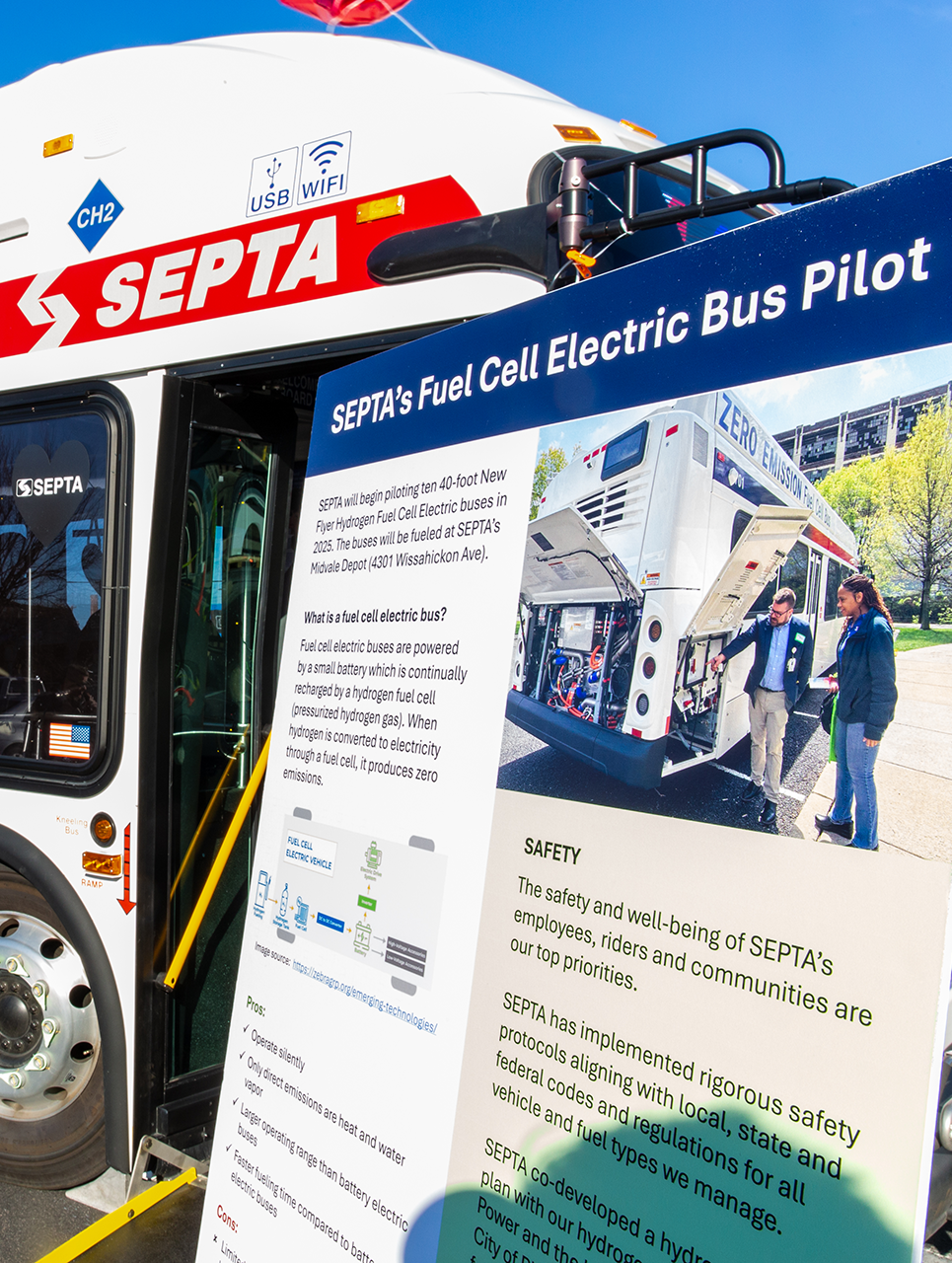
 This special section is a part of Every Voice, Every Vote, a collaborative project managed by The Lenfest Institute for Journalism. The William Penn Foundation provides lead support for Every Voice, Every Vote in 2024 and 2025 with additional funding from The Lenfest Institute for Journalism, Comcast NBC Universal, The John S. and James L. Knight Foundation, Henry L. Kimelman Family Foundation, Judy and Peter Leone, Arctos Foundation, Wyncote Foundation, 25th Century Foundation, Dolfinger-McMahon Foundation, and Philadelphia Health Partnership. To learn more about the project and view a full list of supporters, visit
This special section is a part of Every Voice, Every Vote, a collaborative project managed by The Lenfest Institute for Journalism. The William Penn Foundation provides lead support for Every Voice, Every Vote in 2024 and 2025 with additional funding from The Lenfest Institute for Journalism, Comcast NBC Universal, The John S. and James L. Knight Foundation, Henry L. Kimelman Family Foundation, Judy and Peter Leone, Arctos Foundation, Wyncote Foundation, 25th Century Foundation, Dolfinger-McMahon Foundation, and Philadelphia Health Partnership. To learn more about the project and view a full list of supporters, visit 
